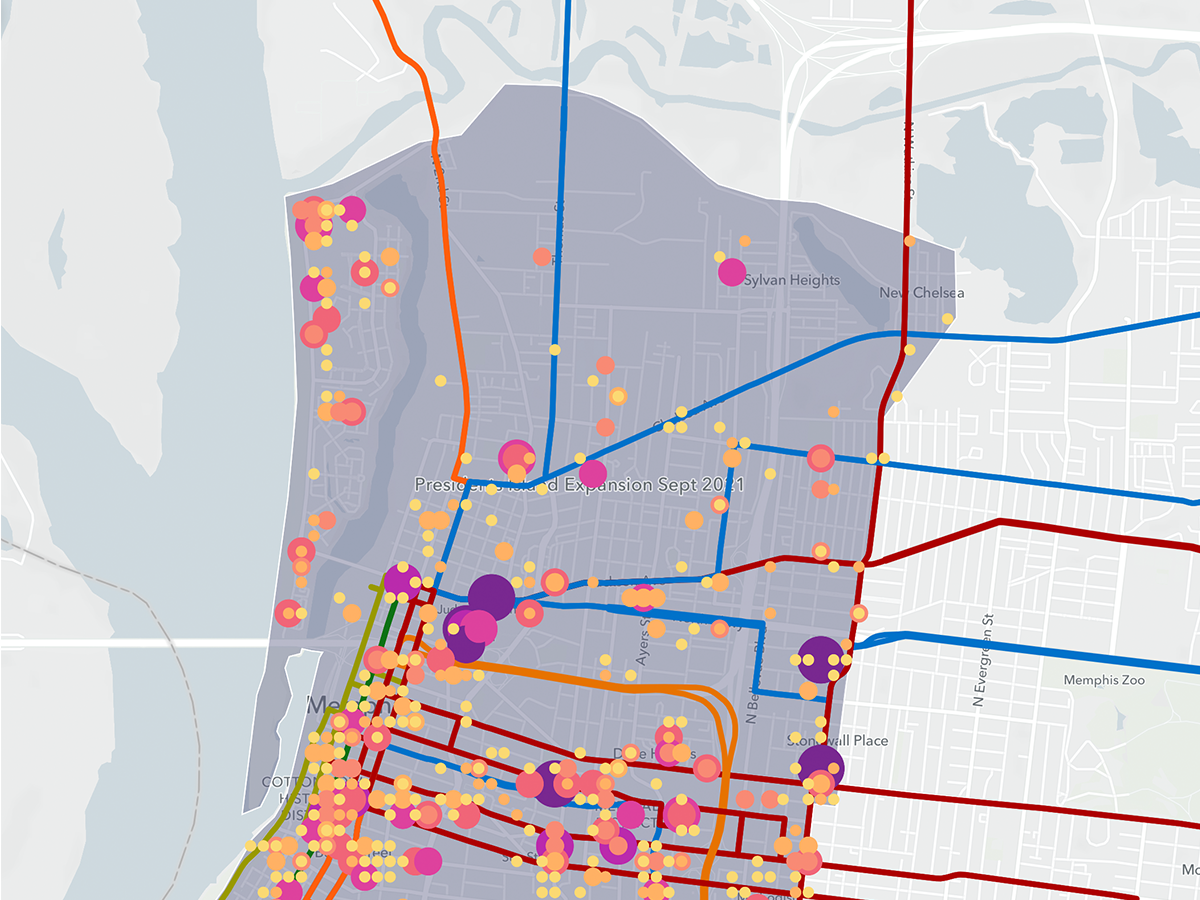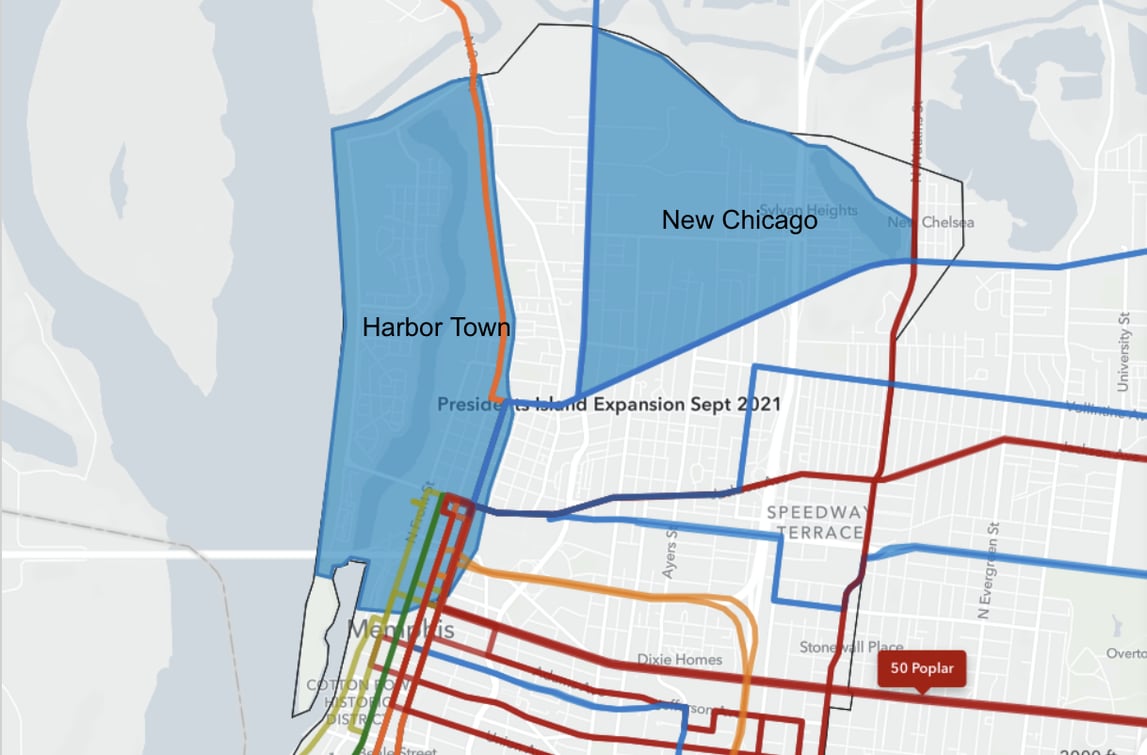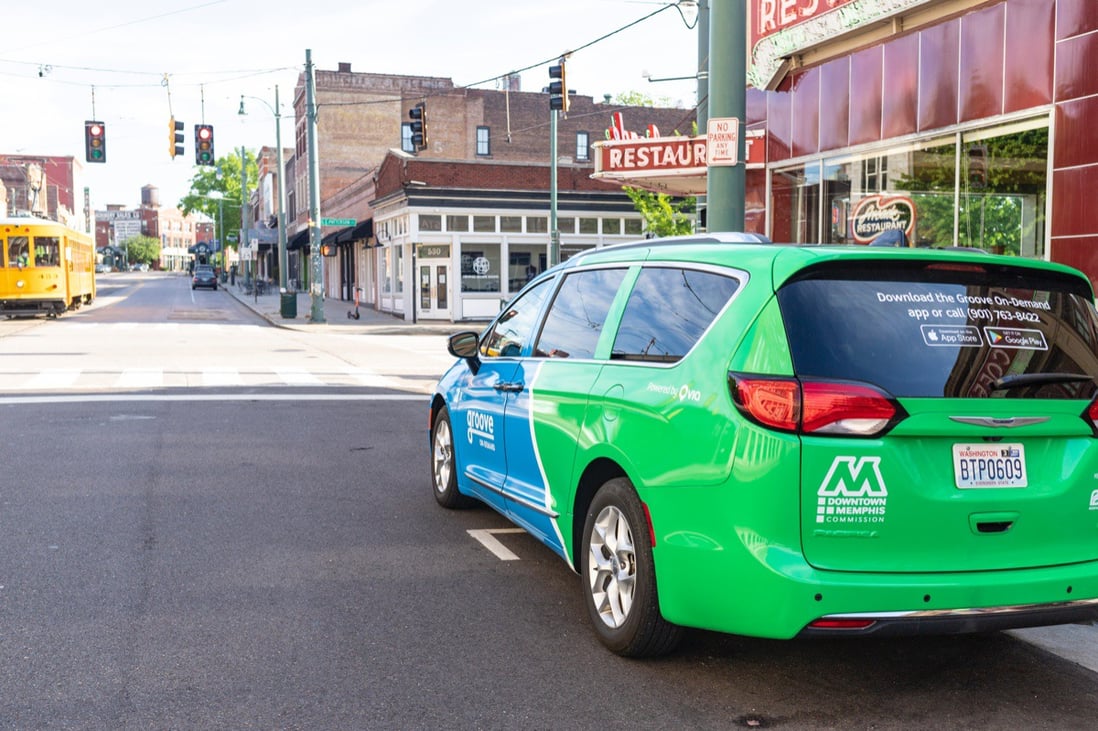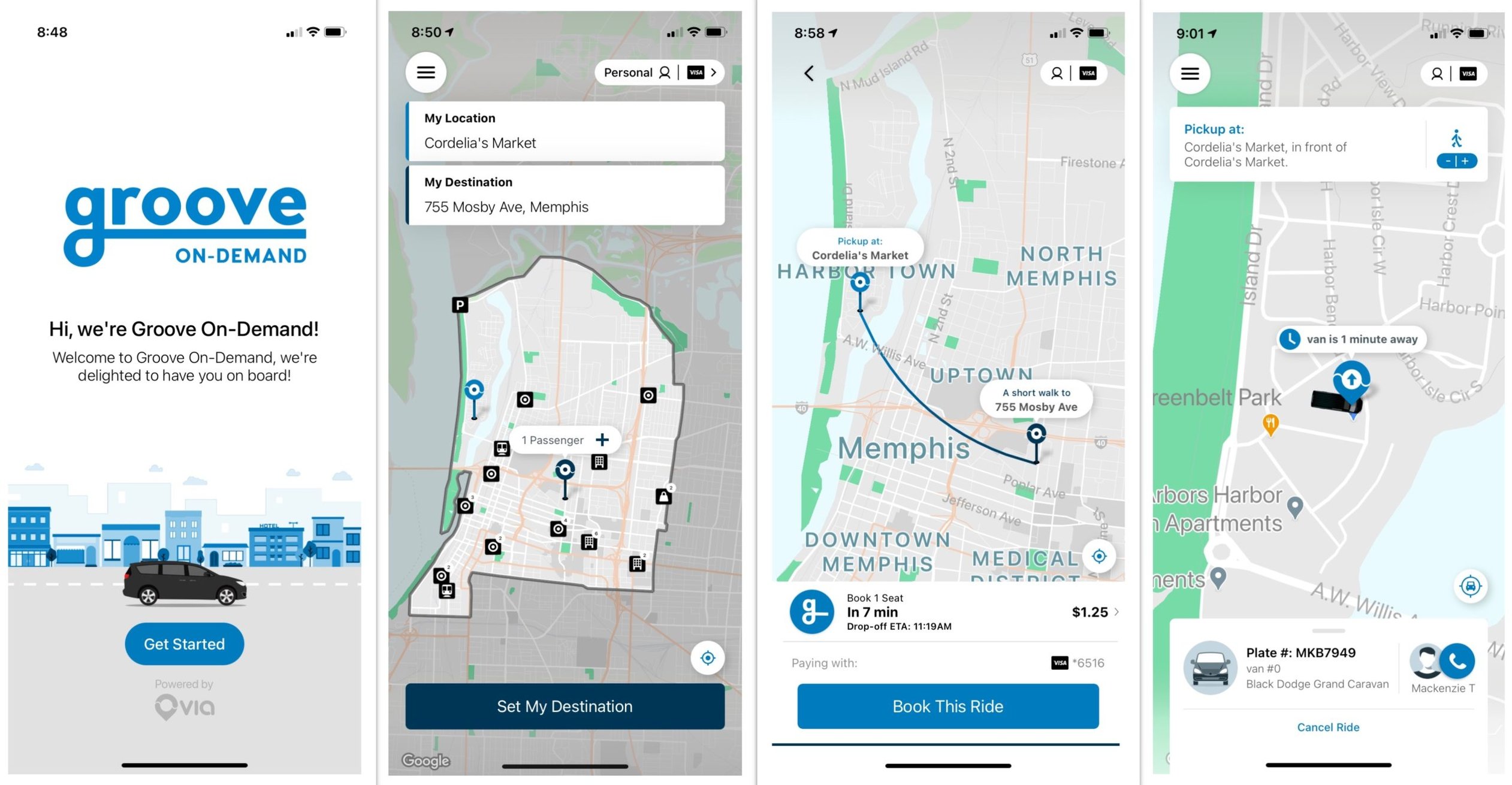Welcome to our Data-Driven Planning Lessons series , where we give you key takeaways on how cities are increasing transit accessibility by leveraging multiple types of data, including demographics, fixed-route ridership, on-demand mobility patterns, and beyond — all in one platform. Let’s get started.
As in many US cities with lower urban density, the Memphis fixed-route transit network struggled to reach areas of the city where transit was sorely needed. Though bus lines are fairly well-concentrated downtown, getting to that well-served downtown area can be a challenge for residents who live further out.
Groove On Demand, an on-demand microtransit service launched in February 2021, aims to provide greater connectivity in the city and to address multiple urban transit deserts surrounding the Downtown core.
Drag the centerline in the slider below to see how fixed routes and on-demand services complement one another.

Using the on-demand transit data layer in Remix, Via’s transit-planning software, we built this tool to visualize the network before and after introducing Groove On-Demand. Now, residents living in the previous transit deserts have the freedom to get across town more conveniently.
Multiple stakeholders, each with different priorities, collaborated to make the service a reality. Memphis Area Transit Authority (MATA), the transit agency serving the Greater Memphis community of Memphis within Shelby County, was primarily concerned about delivering transit equity to the lower-income neighborhood of New Chicago. The Downtown Memphis Commission and Memphis Medical District Collaborative sought to connect residents of Downtown and the surrounding neighborhoods to job opportunities, medical appointments, and daily necessities. The Downtown Memphis Commission was also interested in finding solutions to help commuters park once, rather than moving their vehicles throughout the day for meetings, lunches, etc.
 Fixed-line services in Memphis, Tennessee (shown by the colored lines), have very limited coverage in Harbor Town and the New Chicago area.
Fixed-line services in Memphis, Tennessee (shown by the colored lines), have very limited coverage in Harbor Town and the New Chicago area.
Increasing equitable access.
For the over 30% of residents in New Chicago who don't own a car, and the 42% falling below the poverty threshold, their biggest mobility challenge is as simple as it is frustrating: no feasible transit options exist. While those at the edges of the neighborhood may catch a low-frequency line to downtown locations, travel within the neighborhood is inconvenient without a private car.
In the Harbor Town neighborhood, a few fixed lines exist, but only 2% of residents take transit to work. The 26% of Harbor Town’s 4,200 residents who live below the poverty line, and the 15% who don’t have a private vehicle, struggle to access opportunities beyond their own neighborhood. To expand the coverage of public transit for these residents, local entities (Memphis Area Transit Authority, Downtown Memphis Commission and Memphis Medical District) teamed up to launch an on-demand, flexible and affordable transportation option: Groove On Demand.
 Credit: Daily Memphian
Credit: Daily Memphian
Using the on-demand transit data layer in Remix, Via’s transit-planning software, we built this tool to visualize the network before and after introducing Groove On-Demand. With a 10-minute waiting time on average, riders can now reach the downtown area, or anywhere within their own neighborhoods, without a private vehicle. This on-demand service is providing 1300+ trips every week — and 22% of the riders start or end their trips in the previous transit deserts. A majority of popular destinations are commercial buildings, furthering the service’s mission to connect people to economic opportunities.

Groove On-Demand rider app interface.
This year, the service has seen its popularity spike as gas prices in the Mid-South hit record highs, as reported in a local newspaper. “As we all know, one of the greatest challenges in Memphis with mass transit is our lack of density,” commented Paul Young, Downtown Memphis Commission President. “This is a model that can be used to offset that lack and get to the point where we have the dense, traditional mass transit of other cities.”
This article is one of a series of transit planning stories featuring how cities are transforming transit deserts with a new solution:- Cities are transforming transit deserts with data-driven planning
- The key to successful transit planning: complement fixed routes
- In transit planning, on-demand is essential for low-density cities
- Filling the gaps in areas with limited or no transit options.
- Microtransit fills in transit gaps to link this suburb to broader opportunities

Data Journalist




%206.png?width=71&height=47&name=The%20Buzz%20Blog%20Hero%20(1750%20x%201200%20px)%206.png)